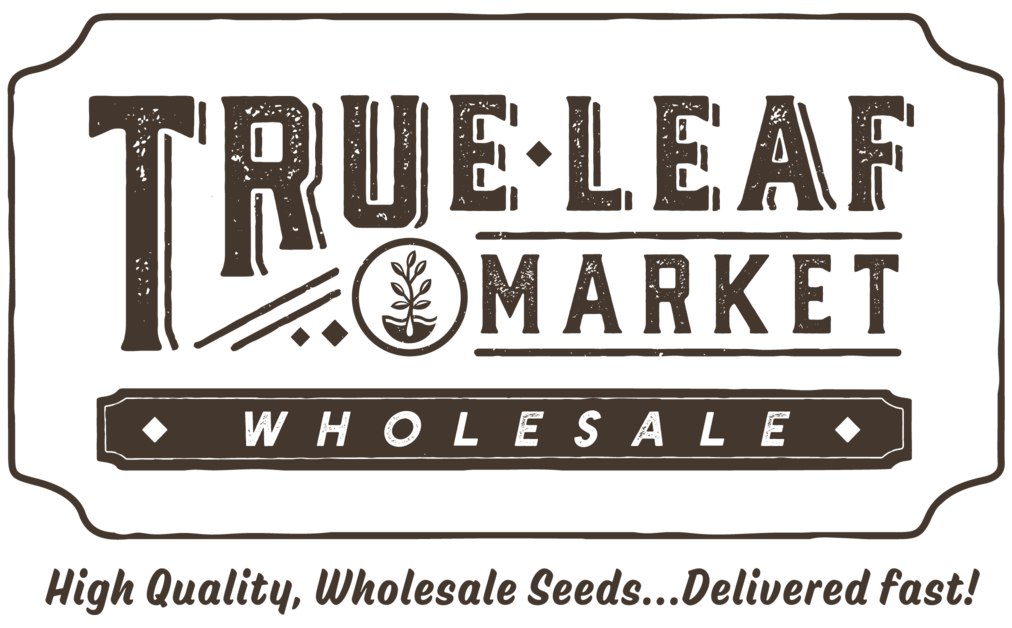Growing Non-GMO Vates Blue Scotch Curled Kale Vegetable Seeds
How to Grow Vates Blue Scotch Curled Kale from Seed
Kale is a cool hardy crop able to be sown directly in early spring or late fall. For best starts, begin indoors 3-4 weeks before final spring frost or 6-8 before the first autumn frost. Plant 3-4 seeds 1/4" deep per cell and 3-4" apart in the garden in nitrogen-rich, Organic, well-drained soil with a pH of 6.0-7.5. Germinates in 3-10 days, thinning out best starts to 1 plant per pot or every 12-18" in the garden as true leaves establish. Kale benefits from fertilizer every 4 weeks. Extended summer heat will cause plants to bolt and become bitter.
Non-GMO Vates Blue Scotch Curled Kale seeds can be grown in all grow zones, with full or partial sun. Directly sow the seeds one fourth of an inch deep in moist, rich soil, with a pH level between 6.5 and 6.8. Space the seeds eighteen to twenty four inches apart, with two feet between rows. While growing, the soil must be kept moist, but care must be taken to not over water the plants. The outer leaves can be harvested sixty days after sowing. Continuous harvesting is possible if the bud is kept intact.
Vates Blue Scotch Curled Kale in the Vegetable Garden
Kale has recently become one of the most popular vegetables both in and out of the garden. Whether because of unparalleled health benefits, ease of growing, or showy decorative color, there is almost no reason not to have a place for kale in the garden box. Kale is one of the most hardy Brassicas, boasting a tolerance to both heat and cold extremes and even overwintering in moderate climates. Kale is more diverse than you think, available in a variety of unique colors, shapes, sizes, and textures.
Vates Blue Curled Kale (Brassica oleracea var. acephala) is a highly nutritious plant, and part of the cabbage family. It's more compact than other kale varieties. It will over winter in most zones, but can be planted in in the spring or the fall. Frost actually improves the flavor as kale prefers a cooler environment. Water well during hotter months.
Kale is versatile, and can be made into crunchy kale chips, added to soups and stews, cooked by itself, and is a delicious addition to salads. Believe it or not, the bitter flavor is lessened when the leaves are gently massaged just before eating or adding to recipes.
Harvesting Vates Blue Scotch Curled Kale
Most kale is ready to begin harvesting about 60 days from sowing. Kale is a "cut and come again" crop and continuously harvesting younger, outer leaves will encourage growth. Carefully cut back any yellowing leaves that may appear at the base. In warm enough climates, kale can produce over winter but, in colder regions, lay a tarp or row cover to further a winter harvest. Kale can be continually harvested for a few weeks if outer leaves are harvested and the center bud is left intact.
About Vates Blue Scotch Curled Kale Seeds
Vates Blue Scotch Curled Kale is a high yielding variety high in nutrients. This crop is leafy and green in color. Vates Blue Scotch Curled Kale dates back to the 1700's and does well in all grow zones, with full or partial sunlight.
First mentioned in garden text around 1863.
Dwarf Blue Curled Scotch is an early kale that produces tasty greens when used in salads or steamed.
The blue-green leaves are finely curled and very attractive reaching 12-15" in high, and spread to 20-35" in width.
Extremely hardy and productive. Will over winter with little protection. This is one of the best frost resistant kales.
A perfect source of nutritional greens during the cool season.
Great market garden kale for its flavor and color. Easy to sell.
TIP: Saute with olive oil and minced garlic. Just when they become wilty add a touch of balsamic vinegar. Stir, remove from heat and serve. SO GOOD!




